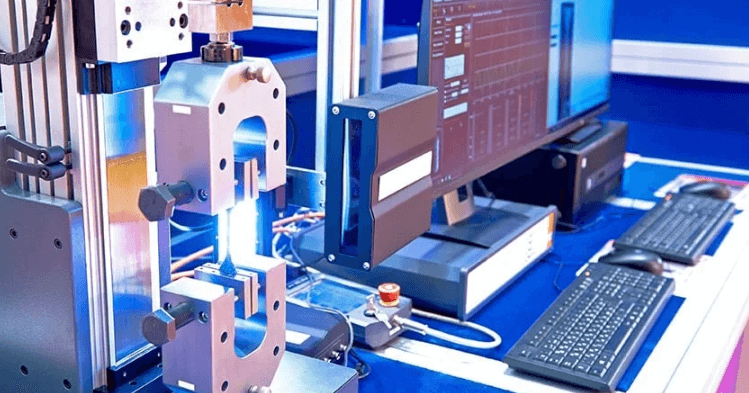
Streamline Your Business Operations with Mobile Work Order Management
Effective work order management ensures smooth business operations, particularly in industries highly reliant on service and maintenance tasks. Traditional paper-based systems, while familiar, are fraught with inefficiencies and errors. By embracing a mobile solution, businesses can streamline various processes, making it faster and easier for teams to manage tasks. Not only does this digitization improve accuracy, but it also enhances real-time communication, allowing for immediate updates and adjustments as needed. Mobile work order systems offer unique advantages, such as reducing manual data entry and providing instant access to essential information.
Benefits of Mobile Work Order Management
Implementing a mobile work order management system offers many benefits that can revolutionize how businesses operate. These benefits cater to different facets of business operations and significantly improve productivity:
- Increased Efficiency: Mobile systems facilitate real-time updates and instantaneous communication, drastically reducing downtime. With every team member accessing the same, up-to-date information, coordination becomes far more seamless. This immediacy ensures that tasks are completed quicker and with fewer disruptions, driving overall productivity. For example, when a technician completes a job, they can immediately update the status, allowing managers to allocate new tasks without delay.
- Improved Accuracy: Manual data entry can be significantly improved by eliminating mistakes. Digital forms guarantee accurate information input on the first attempt, ensuring data integrity and operational dependability. This accuracy translates to better resource management and fewer operational hiccups. For instance, the risk of misreading handwritten notes or losing essential documents is eliminated, providing a clear and accurate record of all work orders.
- Enhanced Accessibility: Mobile work order management systems provide unparalleled flexibility. Technicians and managers can access work orders from anywhere, anytime. This accessibility means work isn’t bound by location, allowing quicker responses to issues and more agile workforce deployment. Whether a technician is in the field or working remotely, they can still access all necessary information to complete their tasks efficiently.
Key Features to Look For
Integrations remove data silos and promote a more unified operational setting, whether it’s CRM software, financial systems, or inventory management systems. This compatibility enables seamless data exchange among systems, improving productivity and decision-making processes:
- Real-Time Tracking: It is essential to track work orders in real-time. This functionality enables supervisors to monitor progress, detect delays, and make required changes to ensure projects stay on track. It also provides insight into the process, allowing for improved supervision and control. For instance, in cases where a task is running late, managers can promptly step in and allocate extra resources or offer essential assistance.
- Integration Capabilities: To maximize the utility of a mobile work order management system, ensure it integrates seamlessly with other critical software your business uses. Integrations remove data silos and promote a more unified operational setting, whether it’s CRM software, financial systems, or inventory management systems. This compatibility enables seamless data exchange among systems, improving productivity and decision-making processes.
- Customizable Templates: Every business has unique needs, and a one-size-fits-all approach must often be revised. Look for systems that offer customizable templates, allowing you to tailor forms and workflows to match your specific operational requirements. This flexibility can save time and standardize processes, contributing to overall efficiency. For instance, businesses can create templates that cater to specific tasks, ensuring that all necessary information is captured uniformly across all work orders.
Challenges and How to Overcome Them
Despite the clear advantages, transitioning to a new mobile work order management system can present several challenges. Initial implementation costs and employee resistance to change are among the most common hurdles. Moreover, by implementing changes in phases, teams can adapt slowly, lessening the impact of change and facilitating a smoother adjustment process. By carefully planning and executing solutions to these challenges, businesses can maximize the advantages of mobile work order systems. Moreover, involving workers in the transition and asking for their input can promote a feeling of ownership and improve the adoption of the new system.
Future Trends in Mobile Work Order Management
As technology advances, mobile work order management systems also improve their capabilities. Multiple upcoming trends are ready to enhance the effectiveness of these systems, paving the way for increased operational efficiencies:
- AI Integration for Predictive Maintenance: Leveraging artificial intelligence can revolutionize maintenance schedules by predicting potential equipment before they occur. For example, artificial intelligence can examine past data and detect trends that come before equipment breakdowns, enabling maintenance efforts to be implemented promptly.
- Augmented Reality (AR) for Remote Assistance: AR technology can offer real-time guidance and support to technicians in the field through remote assistance. This feature is handy for complicated tasks that need expert help and should be easily accessible in person. Technicians can utilize AR glasses to access detailed instructions or receive real-time guidance from experts who can observe the technician’s perspective, ultimately improving problem-solving skills.
- Enhanced Mobile Security: As mobile technology becomes more integral to business operations, ensuring the security of sensitive data is paramount. Advanced security measures, including encryption and multi-factor authentication, will become standard features to protect against data breaches and cyber threats. By implementing robust security protocols, businesses can safeguard their information and maintain customer trust.
Read also: How Machine Learning Enhances User Experience in Mobile Casinos
Conclusion
Moving to a mobile work order management system provides significant benefits that can significantly improve overall business operations. Mobile solutions overcome several drawbacks of traditional systems by enhancing efficiency, accuracy, and data management. Although there may be difficulties during the implementation process, these challenges can be successfully controlled through adequate planning, training, and gradual deployment techniques. The ongoing development of technology offers the potential for further advancements and enhancements in mobile work order management. Companies can keep a competitive advantage and reach peak operational efficiency by being proactive about these trends. Accepting these changes ensures future success and creates a solid base for continued growth and exceptional service delivery.






